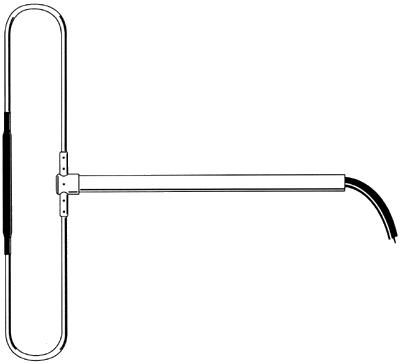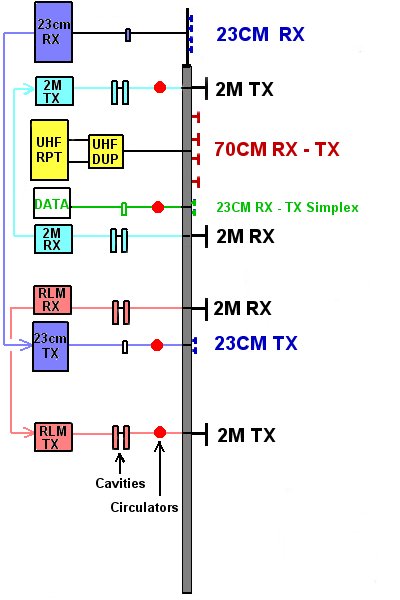Hello all,
Attached is a concept for the very important antenna installation on the Walliston tower. There may be another concept idea but I have not seen such as of yet. So to kick things off please have a read and comment.
Will
VK6UU
Walliston RF concept
Will VK6UU
The antenna layout on the Walliston tower can be designed in several different ways, each with its own pros and cons.
Antenna failure.
Antenna failure, replacement and testing only takes out one repeater. If a triband or dualband antenna fails for example it affects 3 repeater systems. Antennas can be easily isolated tested and replaced.
Desense isolation
Easier to achieve desense isolation with less reliance on duplexer performance. Good duplexer performance is difficult to achieve particularly on 2M. 70cm duplexers are cheap and don?t require as much isolation as 2M duplexers. 23cm duplexers are difficult to source. The antenna layout highlights this with only the 70cm repeater using a duplexer into a single antenna.
Folded dipoles and in particular the ones you see on commercial installations are cheap, broadband, DC earthed for lightning protection, low SWR (1.2 or better), robust, come in a wide frequency range, can be custom made if required (e.g. 23cm) and can be stacked (more than one) to produce increased gain. And these antennas are designed to work side mounted on a tower, which is the type of installation we are looking at. Side mounting also produces 3dB gain, which is ideal, as the Walliston site should direct most of the signals to the West.
Variations
Due to the number of antennas and the number of coaxes required in this design there are some options to reduce this. For example the 2M receiving dipoles (2 of) could be phased together (3dB gain) connected to one coax and then split via a low gain RF amp at the bottom of the tower, giving two antenna feeds. Or only one dipole could be used (to save antenna space) and split as described.
The 4-dipole arrays on 23cm and 70cm could be reduced to 2 dipole arrays. It all depends on what the tower can support.
The diagram is only roughly to size but a to scale diagram can be produced to give us a better idea of the antenna space taken.
Walliston tower configuration
I hope this document encourages discussion and more ideas. The antenna installation is one important (if not the most important) aspect of this complex installation. If we wish to achieve the very best performance RF wise then considerable engineering excellence needs to be our number one goal.
![]()

